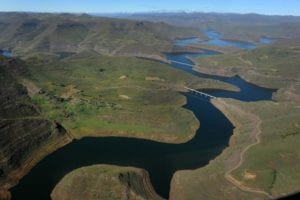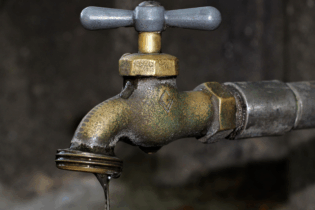The Lesotho Highlands Development Authority (LHDA) has sped-up the resumption of advanced infrastructure works in the Phase II of the LHWP with the beginning of excavation works of two diversion tunnels.
The two tunnels will divert the waters of the Senqu River away from the natural river bed creating a dry foundation and work area needed for the construction of the Polihali Dam. Tente Tente, Chief Eexecutive of the LHDA, confirms that the construction of the diversion tunnels is an important element of the Phase II advance infrastructure works which were halted during the Covid-19 lockdown period. “We are pleased to see construction work restarting, including the work on the diversion tunnels,”said Tente. Full resumption of the Phase II advance infrastructure construction works and the Project’s social and environmental programmes will be incremental as consultants and contractors meet their Covid-19 mitigation obligations and travel restrictions are lifted. The diversion tunnels will take approximately 18 months to complete, from the contract start date. Building two tunnels will increase the capacity to carry floods and will provide flexibility to work in one tunnel while the river flows in the other one. The tunnels, one 7m in diameter and almost a kilometre in length, and the second, 9m in diameter and similar length, run parallel to each other from the intake point to the outlet downstream of the dam. They will be excavated by drill and blast method, and will be supported by rockbolts and shotcrete as required.SCLC Polihali Diversion Tunnel Joint Venture was awarded the diversion tunnel construction contract in April 2019.
It comprises of both South African and Lesotho experts. The Metsi a Senqu-Khubelu Consultants Joint Venture (MSKC) which also includes a number of South African and Lesotho-based firms i.e. Aurecon (SA), Knight Piesold (SA), Hatch Goba (SA), SMEC (SA) and FM Associates (Lesotho), designed the diversion tunnels and is supervising the construction work. Phase II of the Lesotho Highlands Water Project builds on the successful completion of Phase I in 2003. It delivers water to the Gauteng region of South Africa and utilises the water delivery system to generate electricity for Lesotho. Phase II will increase the current supply rate of 780 million cubic metres per annum incrementally to more than 1 270 million cubic metres per annum. At the same time, it will increase the quantity of electricity generated at the ‘Muela hydropower station and is a further step in the process of securing an independent electricity source to meet Lesotho’s domestic requirements. The hydropower further feasibility studies confirmed that conventional hydropower is the preferred option for the Phase II hydropower component and identified three potential sites.







